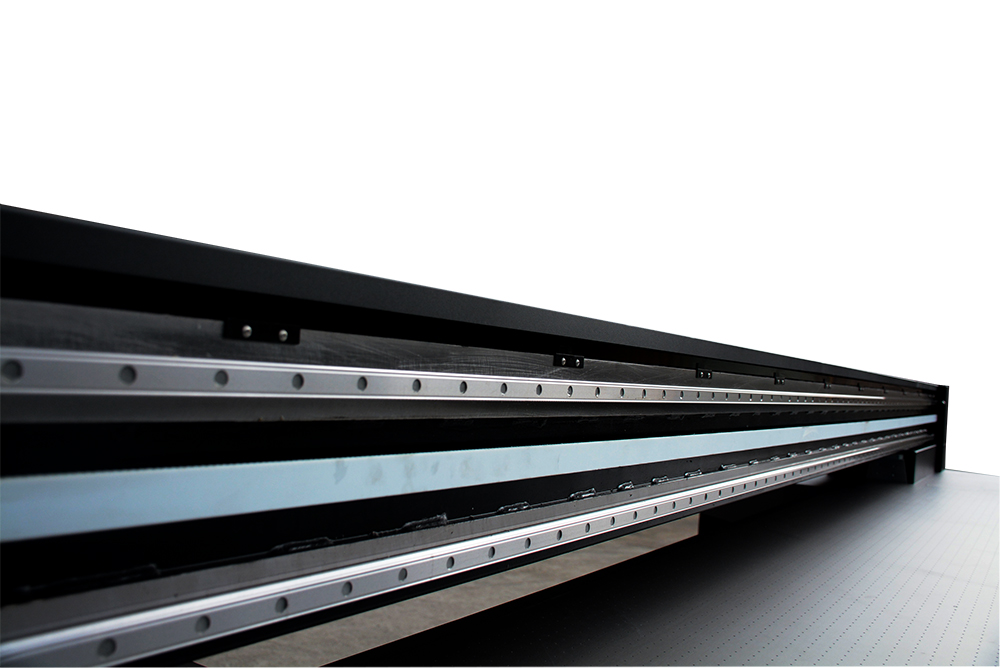How to Troubleshoot Inkjet Nozzle Clogs in UV Flatbed Printers
UV flatbed printers have revolutionized the printing industry, offering high-quality, durable prints on a wide range of substrates. However, like any sophisticated machinery, they are not immune to issues. One of the most common problems encountered by users is nozzle clogs. Nozzle clogs can significantly affect print quality, leading to streaky, blotchy, or incomplete images. In this article, we will delve into the causes, symptoms, and, most importantly, the troubleshooting steps to resolve inkjet nozzle clogs in UV flatbed printers.

Understanding Nozzle Clogs
Nozzle clogs occur when ink dries or becomes sticky inside the nozzles of the print head. This can happen due to several reasons:
Ink Drying: If the printer is left unused for an extended period, the ink in the nozzles can dry out, causing blockages.
Contaminants: Dust, debris, or even tiny particles of dried ink can accumulate in the nozzles, obstructing the ink flow.
Ink Quality: Using low-quality or incompatible ink can lead to clogging as it may not flow smoothly through the nozzles.
Environmental Factors: High humidity or temperature fluctuations can affect ink viscosity, making it more prone to drying or clogging.
Symptoms of Nozzle Clogs
Identifying nozzle clogs early can save time and prevent more significant issues. Here are some common symptoms:
Streaky Prints: Lines or streaks appearing on the prints indicate that some nozzles may be clogged.
Missing Colors: If certain colors are not appearing in the prints, it could be due to clogged nozzles for those specific ink channels.
Blank Spots: Completely blank spots on the print where ink should have been deposited are a clear sign of clogs.
Inconsistent Print Quality: Variations in print density or color uniformity across the print can also point to nozzle clogs.
Preliminary Checks
Before diving into more extensive troubleshooting, it’s essential to perform some preliminary checks:
Inspect the Print Head: Visually inspect the print head for any visible signs of dried ink or debris.
Check Ink Levels: Ensure that all ink cartridges are sufficiently filled. Low ink levels can sometimes cause print issues that mimic nozzle clogs.
Run a Nozzle Check: Most UV flatbed printers have a built-in nozzle check function. Run this test to see if any nozzles are not firing correctly.
Troubleshooting Steps
If preliminary checks indicate potential nozzle clogs, follow these steps to resolve the issue:
1. Print Head Cleaning
Automatic Cleaning: Use the printer’s automatic cleaning function. This process sends cleaning cycles through the print head to dislodge any clogs. Follow the manufacturer’s instructions for the recommended number of cleaning cycles.
Manual Cleaning: If automatic cleaning doesn’t work, you may need to manually clean the print head. Turn off the printer and unplug it for safety. Gently wipe the print head with a soft, lint-free cloth dampened with a mild cleaning solution recommended by the printer manufacturer. Be careful not to touch the electrical contacts or nozzles directly.
2. Using Cleaning Solutions
Cleaning Cartridges: Some printers come with cleaning cartridges that can be used to flush out the nozzles. Follow the manufacturer’s guidelines for using these cartridges.
Specialized Cleaning Solutions: If the printer did not come with cleaning cartridges, you can purchase specialized cleaning solutions designed for UV flatbed printers. Ensure the solution is compatible with your printer model.
3. Soaking the Print Head
Soaking Procedure: For stubborn clogs, you may need to soak the print head. Remove the print head according to the manufacturer’s instructions and soak it in a container filled with the recommended cleaning solution. Soak for the recommended time, usually around 15-30 minutes.
Drying and Reinstalling: After soaking, gently dry the print head with a lint-free cloth and reinstall it. Run another nozzle check to see if the clogs have been cleared.
4. Adjusting Print Settings
Print Head Alignment: Sometimes, misaligned print heads can cause print quality issues that resemble nozzle clogs. Use the printer’s alignment tool to ensure the print head is correctly positioned.
Ink Flow Adjustments: Check if the printer settings allow for adjusting ink flow rates. Slightly increasing the ink flow can sometimes help clear minor clogs.
5. Environmental Considerations
Humidity Control: If you live in a high-humidity area, consider using a dehumidifier to maintain optimal printing conditions.
Temperature Stability: Ensure the printing environment has stable temperatures to prevent ink viscosity changes.
Preventive Measures
Preventing nozzle clogs is always better than having to troubleshoot them. Here are some preventive measures:
Regular Use: Regularly using the printer, even for small print jobs, can help prevent ink from drying in the nozzles.
Quality Ink: Always use high-quality, compatible ink recommended by the printer manufacturer.
Cleaning Schedule: Establish a routine cleaning schedule for the print head, even if the printer is not showing signs of clogs.
Proper Storage: If the printer will be unused for an extended period, follow the manufacturer’s guidelines for proper storage, which may include running a cleaning cycle before storing.
Nozzle clogs in UV flatbed printers can be frustrating, but with the right approach, they can be effectively managed. By understanding the causes, recognizing the symptoms, and following the troubleshooting steps outlined in this article, you can maintain optimal print quality and extend the life of your printer. Remember, prevention is key, so incorporate regular maintenance practices into your printing routine to minimize the risk of nozzle clogs. With proper care, your UV flatbed printer will continue to deliver stunning prints for years to come.
